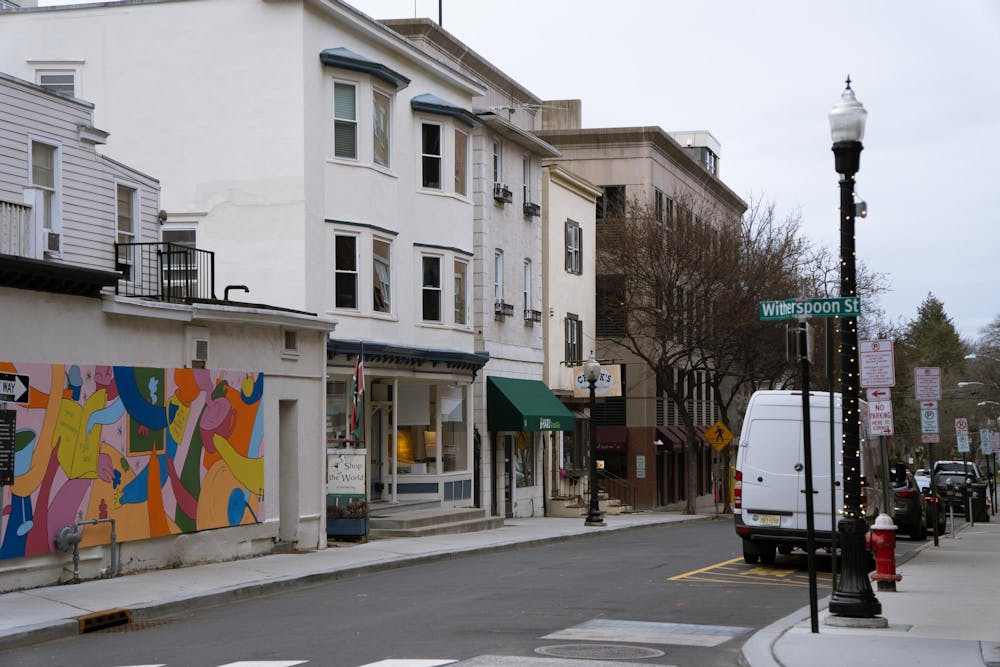During CNN’s election night, John King showed Jake Tapper a map of every state in which Kamala Harris outperformed Joe Biden. The map was blank.
Trump swept all seven swing states, and won the popular vote for the first time. The New York Times map showing shifts from the 2020 election shows a sea of red as counties across the country voted more red than they ever had.
In New Jersey, Kamala Harris received 51.3 percent of the vote to Donald Trump’s 46.2 percent as of publication. That 5.1 point difference is the closest margin between the Democrat and Republican candidates in the state since 1992, when Bill Clinton held a 2.4 point lead over George H.W. Bush — some have called these “swing state numbers.”
As for Mercer County, where Princeton is located, Harris handily beat Trump, but also by a smaller margin compared to the last election. The New York Times reports that Mercer County moved 6.3 points to the right in the 2024 Presidential election from 2020. According to the County Clerk’s still-unofficial election results, Kamala Harris holds a 33.7 point lead over Donald Trump. In 2020, however, Joe Biden held a 40 point lead.
While some pundits called the election results a “red wave,” some Democrats saw it differently. Princeton’s state Senator Andrew Zwicker, who is also the Head of Public Engagement and Workforce Development at the Princeton Plasma Physics Laboratory (PPPL), instead characterizes it as a “blue trough.”
The key for Zwicker’s characterization is not to look at the percentages but at the vote count. Whereas Trump’s number of votes went up 413 between the two elections, Harris had 15,582 fewer votes than Biden.
Experts noted that, in a stronghold Democratic state like New Jersey, many blue voters felt comfortable voicing their dissatisfaction with the Biden administration — and particularly its handling of inflation — by not voting or casting a ballot for Trump.
“Within these blue states, voters feel confident and safe in terms of social policy and other types of policies,” Dr. Ashley Koning, the director of the Eagleton Center for Public Interest Polling (ECPIP), told The Daily Princetonian. “[Voters] are exercising their disagreement with Biden and the current administration by voting for Trump when they know that at home in the state, their rights will be protected.”
Others highlighted that the red wave was fueled by voter frustration with Democrats at both the state and national levels.
“People are frustrated. They’re frustrated with what’s happening in D.C. and happening in Trenton,” Rocco Riccio, the Hamilton Township Republican Club president, said. “Democrats have democratically controlled New Jersey for a significant seven-plus years, even in the state legislature, and this is a response to the economic and social issues that have overtaken our legislation.”
Hamilton is located in Mercer County, where Democrats held a 40-point lead in 2020 — a margin that narrowed to 34 points in 2024. This election cycle, Riccio said that the club focused on reaching out to young people and minority groups in an effort to “keep our people enthused to turn out.”
Having canvassed across New Jersey and Pennsylvania this election cycle, Nate Howard ’25, the president of New Jersey College Democrats, identified inflation as a key frustration for many voters. “It’s what a lot of polling has indicated, and it’s shown to be a strong anti-incumbent force in other countries,” he said in an interview with the ‘Prince.’

Howard also discussed the trend of incumbents losing elections during times of high inflation — a pattern Harris proved no exception to.
“We saw that the economy was the number one issue on which people were basing their vote choice within New Jersey,” Koning added.
New Jersey may also be evolving into a purple state.
“New Jersey has gained significantly with registered Republicans since 2021,” Riccio said. “It’s a 12 and-a-half percent increase … we see this gradual growth.”
Since the 2020 general election, GOP voter registration has surged ahead of Democratic registration by a three-to-one margin, with 49,270 new Republican voters added.
“We have some pretty deep pockets of red and some pretty deep pockets of blue within the state — quite the amalgamation of different demographics and socio-economic statuses,” Koning said, noting that the “blue state” label can lead people to overlook the state’s strong Republican base.
Cultural factors may also be in play. Spencer Kent, the lead reporter on N.J. Advance Media’s nine-month investigation into the rise of right-wing radicalism across New Jersey, pointed to underlying cultural factors driving the Republican vote.
“The ‘manosphere’ kind of masculinity has become such a big problem,” Kent said at an event titled “Going Far Right: Extremism in New Jersey” in Whig Hall on Nov. 12. According to Kent’s reporting, instances of “racism, xenophobia, transphobia, and scapegoating for political gain” online have translated into extremism in real-life across the state.
“New Jersey is like any other state dealing with these issues across the country,” he added.
Zwicker, however, pins it on New Jersey seeking change.
“I think people who are moving to New Jersey and registering, or those who have decided to register for the first time, are looking and expressing their dissatisfaction with the status quo, and they clearly are demanding change,” Zwicker said. “That is an incredibly strong sign to New Jersey Democrats that if we do not focus on what we’re hearing from … then we’ve got serious, serious problems. But statewide industry Democrats have heard that and gotten the message now that we can deliver on that message in the next year, in the year after.”
A clearer view of the state’s political direction — and whether this red wave signals a lasting shift — will emerge in the 2025 gubernatorial elections, set to take place in about a year.
Sena Chang is a News contributor for the ‘Prince.’
Charlie Roth is a senior News editor and assistant Data editor for The Daily Princetonian.
Please send any corrections to corrections[at]dailyprincetonian.com.








